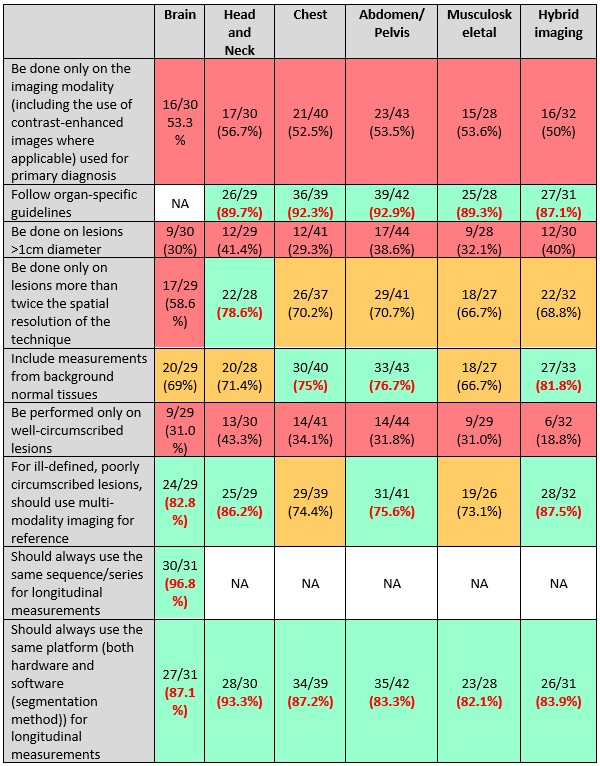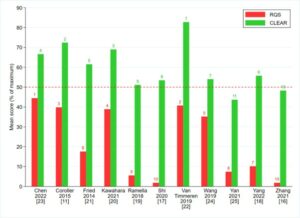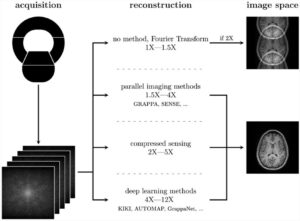Extraction of quantitative data from images requires selecting the regions-of-interest from which this data is to be extracted. This process of region-of-interest selection (or segmentation), whether it be manual or automated, crucially determines the values of the extracted biomarkers. Harmonisation of the segmentation process itself is therefore central to the standardisation of imaging biomarkers. We undertook a Delphi process amongst >50 multidisciplinary experts to achieve a consensus for segmentation practice on CT, MRI and PET-CT images. Items with a >75% agreement were put forward as a recommendation. We concluded that while operator training with appropriate refreshment was absolutely essential in clinical trials and clinical research, board certification of operators was not required. We also recommend system certification and specification of the images to be used, with specified thresholds for signal-to-noise and contrast-to-noise ratios, and study-specific tumour-to background ratios in PET. We strongly recommend SOPs for quantitative imaging with window-level ranges specified on an organ basis. We believe that while multiple reconstruction methods can be used, along with a mixture of CE marked and research software for segmentation, validation of the methods is mandatory, with human observer reference standards essential for both manual and automated segmentation processes. For poorly defined lesions we recommend using multi-modality imaging as a reference. We also recommend that measurements from background normal tissues should be made and longitudinal measurements strictly use the same hardware and software platforms.
Key points
- System certification and specification of image characteristics is recommended for segmentation.
- Both CE marked and verified research tools are allowable for segmentation.
- Operator training and refreshment are mandatory for segmentation in clinical trials and research.
- Pixel numbers within lesion segmented and post-reconstruction algorithms used need reporting.
- Board certification of operators and frequency of re-training need not be mandated.
Authors: Nandita M. deSouza, Aad van der Lugt, Christophe M. Deroose, Angel Alberich-Bayarri, Luc Bidaut, Laure Fournier, Lena Costaridou, Daniela E. Oprea-Lager, Elmar Kotter, Marion Smits, Marius E. Mayerhoefer, Ronald Boellaard, Anna Caroli, Lioe-Fee de Geus-Oei, Wolfgang G. Kunz, Edwin H. Oei, Frederic Lecouvet, Manuela Franca, Christian Loewe, Egesta Lopci, Caroline Caramella, Anders Persson, Xavier Golay, Marc Dewey, James P. B. O’Connor, Pim deGraaf, Sergios Gatidis, Gudrun Zahlmann, European Society of Radiology & European Organisation for Research and Treatment of Cancer













